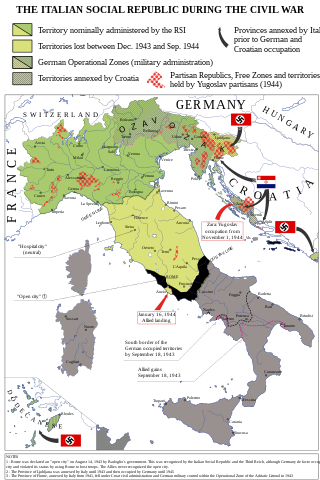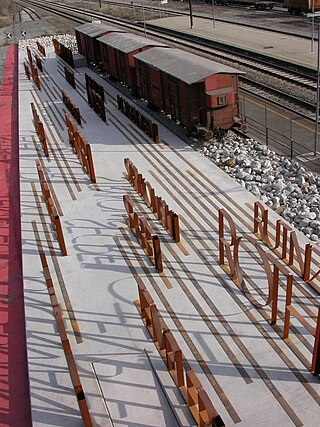
Milano Centrale is the main railway station of the city of Milan, Italy, and is the second railway station in Italy for passenger flow and the largest railway station in Europe by volume.

Drancy internment camp was an assembly and detention camp for confining Jews who were later deported to the extermination camps during the German occupation of France during World War II. Originally conceived and built as a modernist urban community under the name La Cité de la Muette, it was located in Drancy, a northeastern suburb of Paris, France.

Theresienstadt Ghetto was established by the SS during World War II in the fortress town of Terezín, in the Protectorate of Bohemia and Moravia. Theresienstadt served as a waystation to the extermination camps. Its conditions were deliberately engineered to hasten the death of its prisoners, and the ghetto also served a propaganda role. Unlike other ghettos, the exploitation of forced labor was not economically significant.

Theodor Dannecker was a German SS-captain, a key aide to Adolf Eichmann in the deportation of Jews during World War II.

Holocaust trains were railway transports run by the Deutsche Reichsbahn and other European railways under the control of Nazi Germany and its allies, for the purpose of forcible deportation of the Jews, as well as other victims of the Holocaust, to the Nazi concentration, forced labour, and extermination camps.

Shlomo Venezia was a Greek-born Italian Jew. He was a survivor of the Auschwitz-Birkenau concentration camp.
The Fossoli camp was a concentration camp in Italy, established during World War II and located in the village Fossoli, Carpi, Emilia-Romagna. It began as a prisoner of war camp in 1942, later being a Jewish concentration camp, then a police and transit camp, a labour collection centre for Germany and, finally, a refugee camp, before closing in 1970.

Pithiviers internment camp was a concentration camp in Vichy France, located 37 kilometres northeast of Orléans, closely associated with Beaune-la-Rolande internment camp in deporting foreign-born and some French-born Jews between 1941 and 1943 during WWII.

The Holocaust in Italy was the persecution, deportation, and murder of Jews between 1943 and 1945 in the Italian Social Republic, the part of the Kingdom of Italy occupied by Nazi Germany after the Italian surrender on 8 September 1943, during World War II.

The raid on the Roman Ghetto took place on 16 October 1943. A total of 1,259 people, mainly members of the Jewish community—numbering 363 men, 689 women, and 207 children—were detained by the Gestapo. Of these detainees, 1,023 were identified as Jews and deported to the Auschwitz concentration camp. Of these deportees, only fifteen men and one woman survived.

San Vittore is a prison in the city center of Milan, Italy. Its construction started in 1872 and opened on 7 July 1879. The prison has place for 600 inmates, but it had 1036 prisoners in 2017.

Theodor Emil Saevecke was an SS officer and perpetrator of the Holocaust in Poland and the Holocaust in Italy.

Liliana Segre is an Italian Holocaust survivor, named senator for life by President Sergio Mattarella in 2018 for outstanding patriotic merits in the social field.

Borgo San Dalmazzo was an internment camp operated by Nazi Germany in Borgo San Dalmazzo, Piedmont, Italy.

The first mass transport of Jews to Auschwitz concentration camp departed from Poprad transit camp in the Slovak State on 25 March 1942 and arrived at its destination on 26 March. It was the beginning of systematic deportation of Jews to Auschwitz concentration camp by the Reich Security Main Office and also the first transport of Jews from Slovakia.

Piero Terracina was an Italian Jewish manager, Holocaust survivor.

Erna de Vries was a German Holocaust survivor.
Convoy n° 77 of July 31, 1944 the last large convoy of Jews deported from the Drancy internment camp to the Bobigny train station for the Auschwitz-Birkenau extermination camp.

















